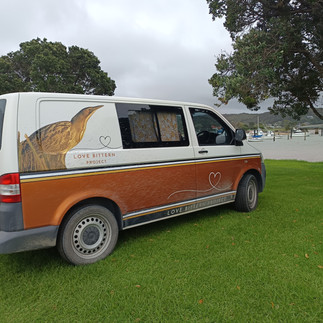The Love Bittern Project travels into every region of New Zealand empowering people to raise awareness for Bittern, help protect Bittern and to restore their wetland homes.
Check out our Spring 2025 road trip here!
17 August 2025
It was a slow trip out to South Head today...
I kept on getting distracted by Habitat for Hūrepo!
The South Head Community turn out for the ABs (Australasian Bittern) was great considering those other ABs were playing!
The community there needed to fine tune their knowledge around Bittern so they could more confidently and accurately record male bittern booming in the Muster.
Thanks to the first fifteen who turned up for Bittern, we reckon you're our winning team!
If you'd like to join the ABs 1st 15 in South Head get in contact with Boyd Steel boyd.pestfree@gmail.com
















